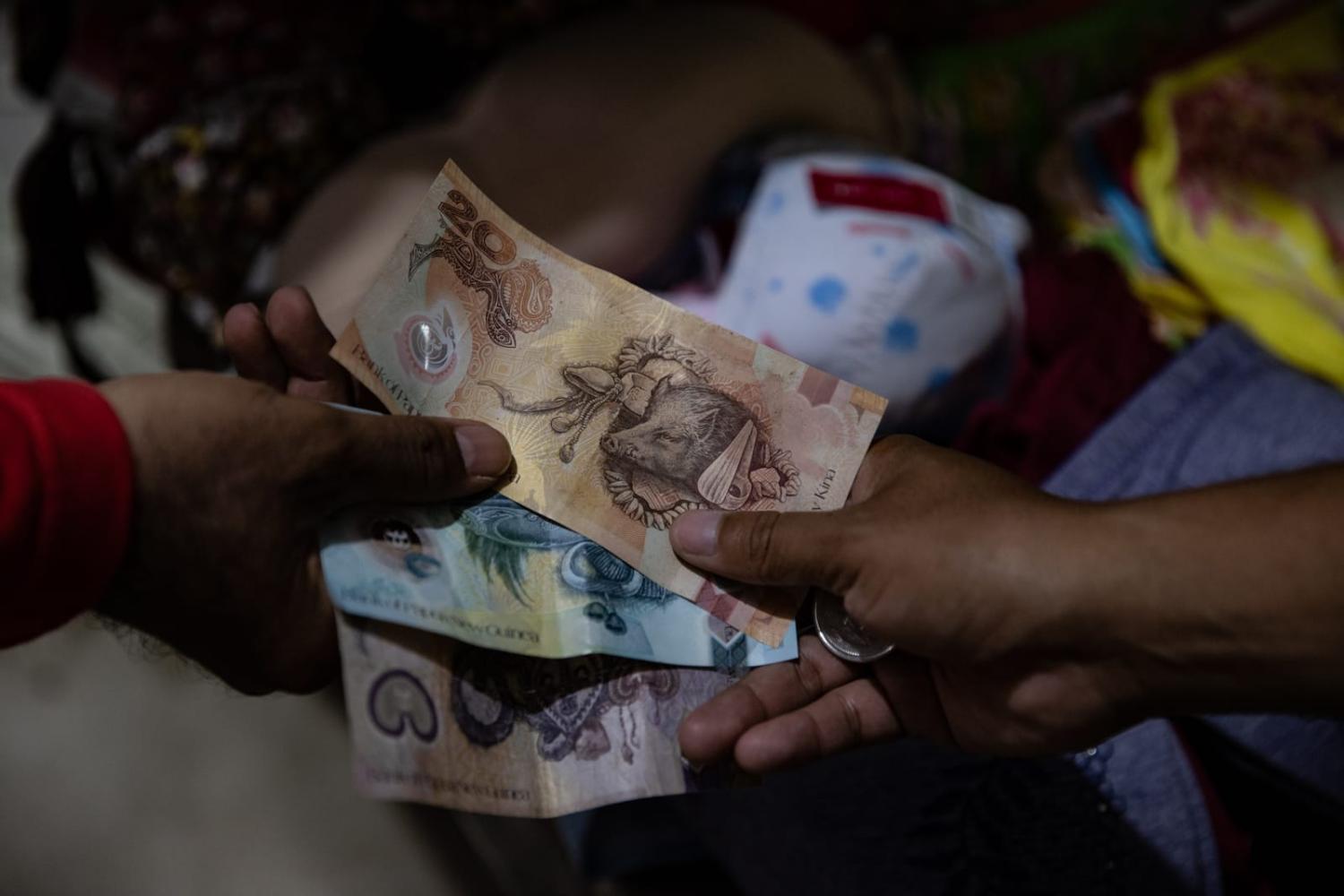Papua New Guinea has enormous development needs. Paying to meet these is the challenge. So the International Monetary Fund recently agreed to provide PNG a US$918 million loan.
It’s an extraordinary amount of money for a country already struggling with years of persistent budget deficits. The consequences of a default on a loan this large would be dire – particularly at a time when a growing number of developing countries face debt distress.
At present, there are no signs that PNG is struggling to service debt. But the national balance sheet is vulnerable to market shifts. Some 49 per cent of PNG’s debt is subject to variable interest rates that are revised annually. And, as interest rates climb globally, PNG is already taking a hit.
National debt stands at US$15.3 billion, amounting to 50 per cent of GDP. The average interest rate on domestic debt is 7.2 per cent, much higher than the 2.8 per cent average interest rate on foreign debt (PNG’s stock of debt is almost evenly split between domestic and foreign debt).
So, PNG needs a way to reduce its debt burden. Financing its deficits primarily through foreign debt with lower interest rates is good. The cheaper rates of the IMF loan free up more funds to be spent on development.
But the IMF has itself listed PNG as a country at high risk of debt distress, citing as reasons low levels of foreign-exchange reserves, liabilities for state-owned entities, and the economy’s vulnerability to fluctuations in commodity prices.
Which begs the question: can borrowing more reduce the risk of debt distress?
The IMF loan terms are favourable. The interest rate is lower than the PNG average at just 2.4 per cent. The ten-year repayment period on the loan, with a five-and-a-half-year grace period, is also generous. A positive outlook for new resource projects also points to future public revenue flows.
All of which sounds good, but risks remain. Previous governments have not always been fiscally responsible, and this experience holds lessons.
Prior to 2002, PNG was characterised as a country trapped by high debt with an upward deficit spiral. Debt as a share of GDP rose from 17 per cent at the time of independence in 1975 to 47 per cent, a trend that had persisted through nine different governments spanning 26 years. But as illustrated in the chart below, PNG has enjoyed relative political stability in the years since 2002. The decade-long government of Sir Michael Somare saw the greatest fall in national debt. But the rollercoaster turned. With Peter O’Neill as PM (2012–19), debt shot back up, a trend that has largely continued since James Marape came to power.
Some commentators characterised the Somare years as a time of booming resources. High commodity prices yielded strong government revenues from company taxes and then came a spike in income tax receipts from the construction phase of the PNG Liquefied Natural Gas Project in 2009. Revenue doubled across the period while government spending increased by only 58 per cent, so PNG moved ahead with fiscal surpluses and debt fell. The outcome lowered PNG’s debt servicing burden from a historic high of 25 per cent to a low of 5 per cent.
But the gains were frittered away by O’Neill’s fiscal mismanagement. The 2013 budget declared: “we are borrowing certain in the knowledge that revenue inflows from mining and LNG projects will make repayment manageable”. Debt increased and so did government expenditure. But the “certain knowledge” didn’t hold. A slump in commodity prices in 2015 and a dispute over the LNG project meant that revenue did not meet expectations. The collapse in revenue extended to other areas such as personal income tax, which fell in line with the decline in formal sector employment, and falls in company tax and GST collections.
This history stands as a warning. PNG as a resource rich, “price taking” economy needs to be prudent. Spending financed by excessive borrowing is vulnerable to market shifts that can lead to a collapse in revenue and large fiscal deficits. Under O’Neill, debt shot up to 40 per cent of GDP. Even after the pandemic years, turning this around is essential.
For PNG, taking on more debt is manageable, provided the money is invested in building productive capacity and brings returns. Borrowing against future resource revenue is unwise. The human toll of a miscalculation could be high if the country becomes shackled to debt serving rather than servicing its people.


